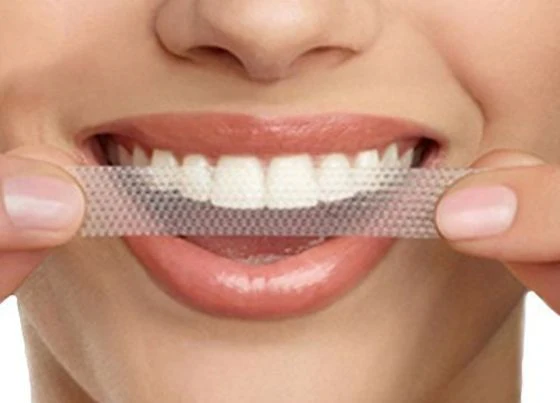
How Often Should You Use Whitening Strips? A Complete Guide
Teeth whitening strips are one of the most popular at-home solutions for a brighter smile. They’re easy to use, relatively affordable, and can produce noticeable results in just days. But when it comes to whitening, more isn’t always better — in fact, using whitening strips too often can damage your teeth and gums.
So, how often should you use whitening strips? The answer depends on several factors, including the brand, your current dental health, and your whitening goals. Let’s break it down step-by-step so you can get a whiter smile without harming your teeth.
What Are Whitening Strips?
Whitening strips are thin, flexible pieces of plastic coated with a whitening gel that usually contains hydrogen peroxide or carbamide peroxide. When applied to your teeth, the gel penetrates the enamel to break down stains caused by coffee, tea, wine, smoking, and aging.
Most strips are designed for daily use over a short period — typically anywhere from 7 to 14 days — to gradually whiten teeth.
How Often You Should Use Whitening Strips
The frequency of use depends on the specific whitening strips you purchase. Always read and follow the manufacturer’s instructions, but here’s a general guideline:
- Standard Whitening Strips (6%–10% peroxide): Once a day for 7–14 consecutive days.
- High-Strength Whitening Strips (above 10% peroxide): Once a day for 5–7 days.
- Low-Strength or Gentle Whitening Strips (below 6% peroxide): Once a day for 14–20 days.
Important: Most dentists recommend using whitening strips no more than twice a year for full treatments. Overusing them can lead to tooth sensitivity, enamel erosion, and gum irritation.
Factors That Affect How Often You Should Use Them
Several personal factors can influence your ideal whitening schedule.
1. Your Tooth Sensitivity
If you have naturally sensitive teeth, you may need to:
- Use whitening strips every other day instead of daily.
- Choose a lower-strength formula.
- Shorten the application time.
2. Stain Severity
Heavier staining may require the full recommended treatment duration, while mild discoloration may improve with fewer days of use.
3. Enamel Health
If your enamel is thin or damaged, frequent use of whitening strips can worsen the problem. Check with your dentist before starting treatment.
4. Type of Whitening Strips
Some strips are designed for quick results and higher peroxide concentrations, while others are more gradual and gentle.
What Happens If You Use Whitening Strips Too Often?
It’s tempting to keep using whitening strips to achieve an even brighter smile, but overuse comes with risks:
- Tooth Sensitivity: Overexposure to peroxide can make your teeth sensitive to hot, cold, and sweet foods.
- Enamel Damage: The whitening gel can weaken enamel if used too often, leading to increased risk of cavities.
- Gum Irritation: Prolonged contact with whitening agents can cause redness and inflammation in your gums.
- Uneven Whitening: Over-whitening can cause certain spots to appear chalky or unnaturally bright.
Maintaining Results After Using Whitening Strips
Once you’ve finished a whitening treatment, you can extend your results by:
- Avoiding Stain-Causing Foods and Drinks
- Limit coffee, tea, red wine, and dark sauces.
- Rinse your mouth after consuming staining foods.
- Practicing Good Oral Hygiene
- Brush twice a day with a fluoride toothpaste.
- Floss daily to remove plaque between teeth.
- Using a Whitening Toothpaste
- Whitening toothpaste can help maintain results without strong bleaching agents.
- Scheduling Regular Dental Cleanings
- Professional cleanings remove surface stains and tartar buildup.
Touch-Up Whitening: How Often Is Safe?
If you want to refresh your smile after a few months, most dentists recommend waiting at least 4 to 6 months before doing another round of whitening strips. This gives your enamel time to recover.
For lighter maintenance, you can use whitening strips for 1–3 days every 2–3 months — but only if your teeth remain healthy and free of sensitivity.
Professional Advice on Whitening Strip Use
Dentists generally agree:
- Always follow the brand’s usage instructions.
- Don’t exceed the recommended treatment period.
- Visit your dentist if you experience severe sensitivity, gum irritation, or tooth pain.
If you’re unsure whether whitening strips are safe for you, get a dental checkup first. Professional whitening treatments may be a better option if you have significant staining or dental work.
Frequently Asked Questions
Q1: Can I use whitening strips every day forever?
No — they’re designed for short-term use only. Using them daily for long periods can damage your enamel.
Q2: How soon will I see results?
Most people see results within 3–5 days, but full results appear after completing the full treatment.
Q3: Can whitening strips whiten crowns or veneers?
No — whitening strips only work on natural tooth enamel.
Q4: Is it bad to sleep with whitening strips on?
Yes — this can severely damage your enamel and irritate your gums. Always follow the instructed wear time.
Q5: Do whitening strips work better after brushing?
Yes, but avoid brushing immediately before use to prevent gum irritation from the gel.
The Bottom Line
So, how often should you use whitening strips? For most people, a single full treatment (7–14 days, once per day) is enough to brighten teeth, and it’s safe to repeat every 4–6 months if needed.
The key is moderation — follow the product’s instructions, listen to your teeth, and consult your dentist if you have any doubts. With the right approach, whitening strips can give you a confident, healthy-looking smile without risking your oral health.